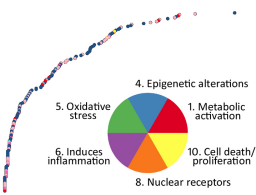Use of high-throughput in vitro toxicity screening data in cancer hazard evaluations by IARC Monograph Working Groups
Main Article Content
Abstract
Evidence regarding carcinogenic mechanisms serves a critical role in International Agency for Research on Cancer (IARC) Monograph evaluations. Three recent IARC Working Groups pioneered inclusion of the US Environmental Protection Agency (EPA) ToxCast program high-throughput screening (HTS) data to supplement other mechanistic evidence. In Monograph V110, HTS profiles were compared between perfluorooctanoic acid (PFOA) and prototypical activators across multiple nuclear receptors. For Monograph V112-113, HTS assays were mapped to 10 key characteristics of carcinogens identified by an IARC expert group, and systematically considered as an additional mechanistic data stream. Both individual assay results and ToxPi-based rankings informed mechanistic evaluations. Activation of multiple nuclear receptors in HTS assays showed that PFOA targets not only peroxisome proliferator activated receptors, but also other receptors. ToxCast assays substantially covered 5 of 10 key characteristics, corroborating literature evidence of “induces oxidative stress” and “alters cell proliferation, cell death or nutrient supply” and filling gaps for “modulates receptor-mediated effects.” Thus, ToxCast HTS data were useful both in evaluating specific mechanistic hypotheses and in contributing to the overall evaluation of mechanistic evidence. However, additional HTS assays are needed to provide more comprehensive coverage of the 10 key characteristics of carcinogens that form the basis of current IARC mechanistic evaluations.
Article Details
Articles are distributed under the terms of the Creative Commons Attribution 4.0 International license (http://creativecommons.org/licenses/by/4.0/), which permits unrestricted use, distribution and reproduction in any medium, provided the original work is appropriately cited (CC-BY). Copyright on any article in ALTEX is retained by the author(s).


